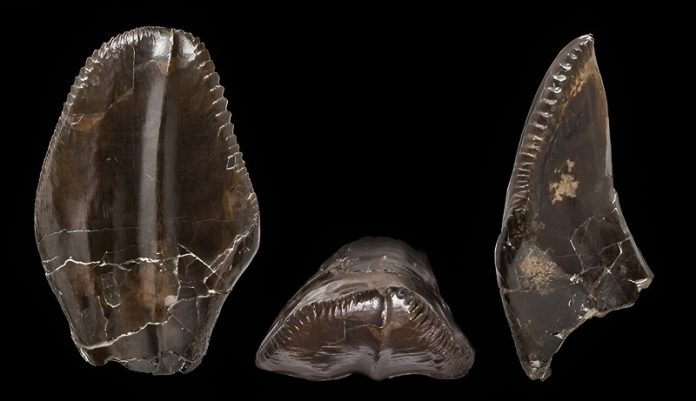
At the end of the Cretaceous period, duck-billed dinosaurs, known as hadrosaurs, were some of the most advanced plant-eaters on Earth.
New research has revealed just how much these dinosaurs ate and how quickly they wore down their teeth.
On average, a hadrosaur’s tooth would be completely worn out in less than two months due to their enormous consumption of tough plants.
To cope with this, these dinosaurs evolved to have hundreds of thousands of replacement teeth throughout their lifetime, making them some of the most successful herbivores in history.
The group of dinosaurs known as ornithopods, which includes species like Iguanodon and Hypsilophodon, started out as small, generalist herbivores in the Middle Jurassic period.
Over time, they evolved into large, specialized plant-eaters that could rival modern herbivores like cows and sheep.
According to research led by Dr. Attila Ősi from Eötvös Loránd University in Hungary, this evolution involved the development of vast numbers of backup teeth, allowing these dinosaurs to eat even the toughest plants in large quantities.
“The teeth and jaws of ornithopods changed drastically during their evolution,” says Dr. Ősi. “Early members of the group, like Iguanodon, took more than 200 days to form and wear down their teeth. But by the end of the Cretaceous, hadrosaurs were wearing through their teeth in as little as 50 days.”
Dr. Ősi and his team believe that this rapid wear was due to the tough plants that later ornithopods were feeding on. As their teeth wore down so quickly, these dinosaurs needed to continuously produce new teeth to avoid starvation.
The findings of this study were published in the journal Nature Communications.
By the end of the Late Cretaceous, hadrosaurs had developed rows of tightly packed teeth that could grind through tough plants efficiently. These teeth were worn down quickly but were replaced just as rapidly by new ones waiting beneath the surface.
Becoming the top plant-eaters
While eating plants may seem easy, it is actually quite difficult. Plants are made up of tough fibers and complex carbohydrates, which are hard to digest.
For herbivores, teeth play a crucial role in breaking down plants into smaller pieces, making it easier for gut bacteria to digest them. However, this process takes a toll on the teeth, wearing them down over time.
“In many herbivores, teeth wear down gradually throughout their life,” explains co-author Professor Paul Barrett. “For some mammals, like elephants or cows, this can limit their lifespan—once their teeth are gone, they can’t eat and eventually die.”
However, reptiles, including dinosaurs, have an advantage. They can continuously produce new teeth, with replacements ready to surface as soon as the old ones wear out. This ability made dinosaur teeth common fossils and an important tool for understanding how these animals evolved.
The research team focused on the teeth and jaws of ornithopods, which eventually became some of the most advanced herbivores in history. By examining well-preserved skulls, the researchers tracked how these dinosaurs’ skulls became more complex and better suited for eating plants over time.
“At first, ornithopods had single rows of simple teeth that were likely used for eating fruits and softer plants,” says Professor Barrett. “But by the time the hadrosaurs evolved, they had many more teeth, with large, sharp edges and ridges that helped them grind down tough plants.”
Later ornithopods also developed the ability to move their jaws in different directions, allowing them to grind plants more effectively. Their bodies grew larger, making room for bigger guts that could better digest the tough plant material.
Why did their diets change?
The researchers noticed that around 110 million years ago, some groups of ornithopods, like the tenontosaurids and their more advanced relatives, evolved a series of similar characteristics. Their teeth increased in number, their jaws interlocked more tightly, and they developed more replacement teeth—making them more effective herbivores.
This could be an example of convergent evolution, where different species evolve similar traits independently. The rise of flowering plants, which started to diversify around this time, might have played a role, but it doesn’t entirely explain the changes in dinosaur diets.
While the researchers have focused on ornithopods so far, they hope to expand their studies to other herbivorous dinosaurs like ankylosaurs and horned dinosaurs. By doing so, they aim to gain a better understanding of how these reptiles became so successful and how evolution shaped their diets during the Mesozoic Era.
Source: Natural History Museum.



